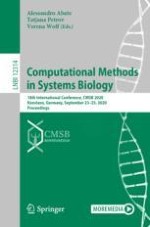2020 | OriginalPaper | Buchkapitel
Accelerating Reactions at the DNA Can Slow Down Transient Gene Expression
verfasst von : Pavol Bokes, Julia Klein, Tatjana Petrov
Erschienen in: Computational Methods in Systems Biology
Aktivieren Sie unsere intelligente Suche, um passende Fachinhalte oder Patente zu finden.
Wählen Sie Textabschnitte aus um mit Künstlicher Intelligenz passenden Patente zu finden. powered by
Markieren Sie Textabschnitte, um KI-gestützt weitere passende Inhalte zu finden. powered by
